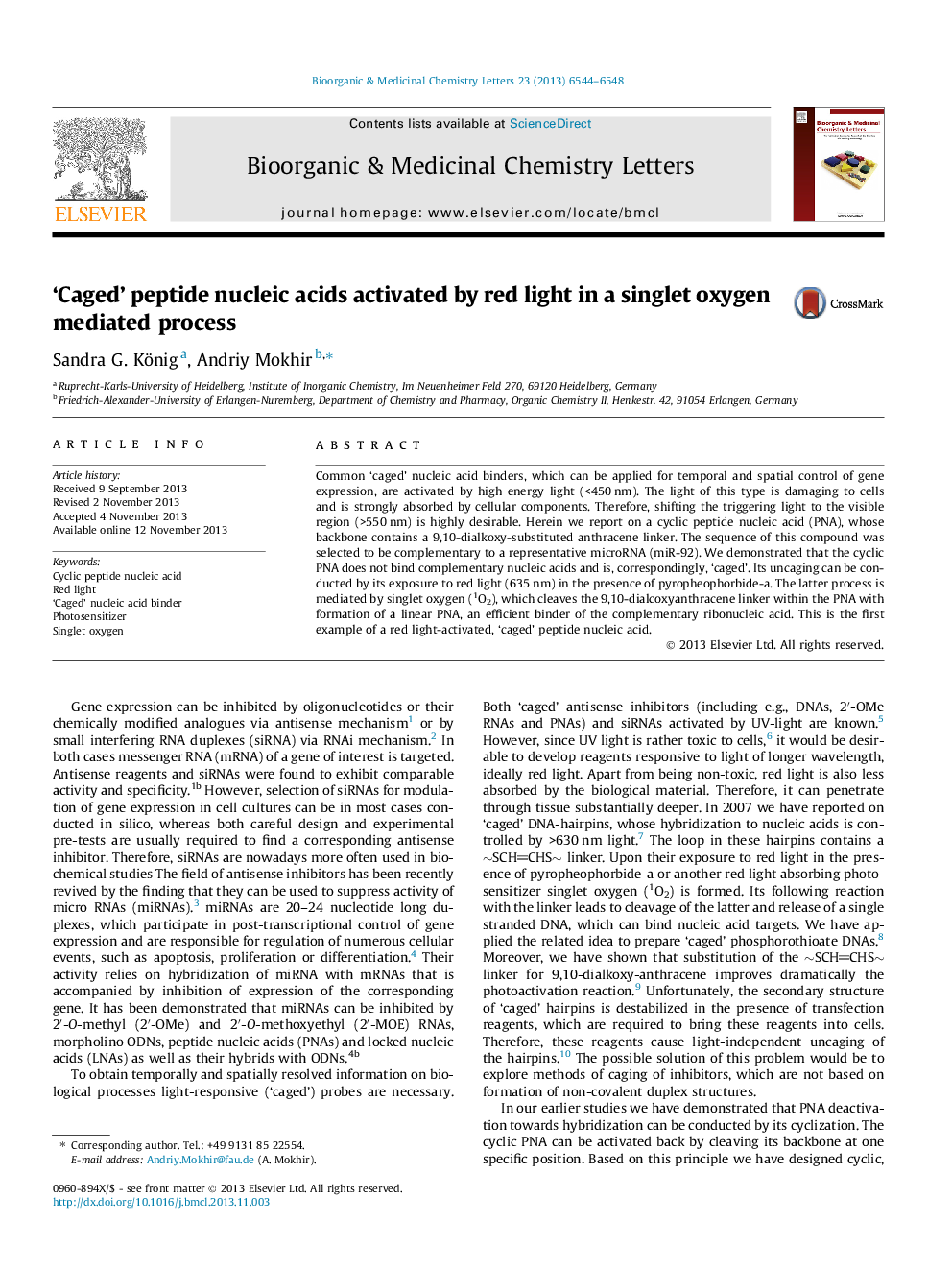| Article ID | Journal | Published Year | Pages | File Type |
|---|---|---|---|---|
| 10593242 | Bioorganic & Medicinal Chemistry Letters | 2013 | 5 Pages |
Abstract
Common 'caged' nucleic acid binders, which can be applied for temporal and spatial control of gene expression, are activated by high energy light (<450Â nm). The light of this type is damaging to cells and is strongly absorbed by cellular components. Therefore, shifting the triggering light to the visible region (>550Â nm) is highly desirable. Herein we report on a cyclic peptide nucleic acid (PNA), whose backbone contains a 9,10-dialkoxy-substituted anthracene linker. The sequence of this compound was selected to be complementary to a representative microRNA (miR-92). We demonstrated that the cyclic PNA does not bind complementary nucleic acids and is, correspondingly, 'caged'. Its uncaging can be conducted by its exposure to red light (635Â nm) in the presence of pyropheophorbide-a. The latter process is mediated by singlet oxygen (1O2), which cleaves the 9,10-dialcoxyanthracene linker within the PNA with formation of a linear PNA, an efficient binder of the complementary ribonucleic acid. This is the first example of a red light-activated, 'caged' peptide nucleic acid.
Related Topics
Physical Sciences and Engineering
Chemistry
Organic Chemistry
Authors
Sandra G. König, Andriy Mokhir,
